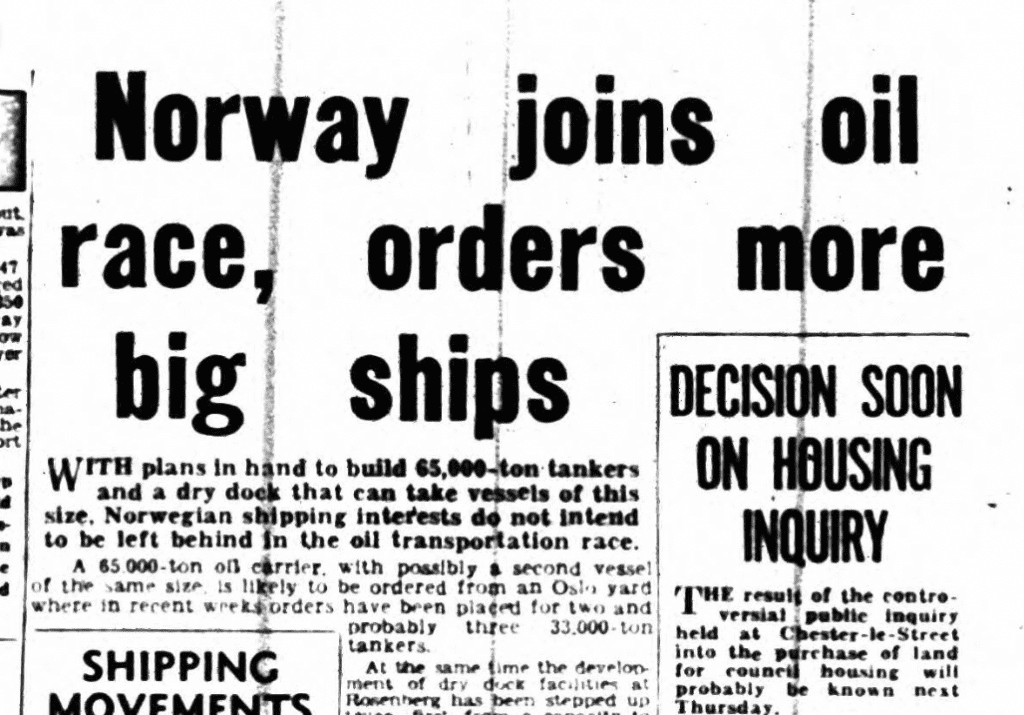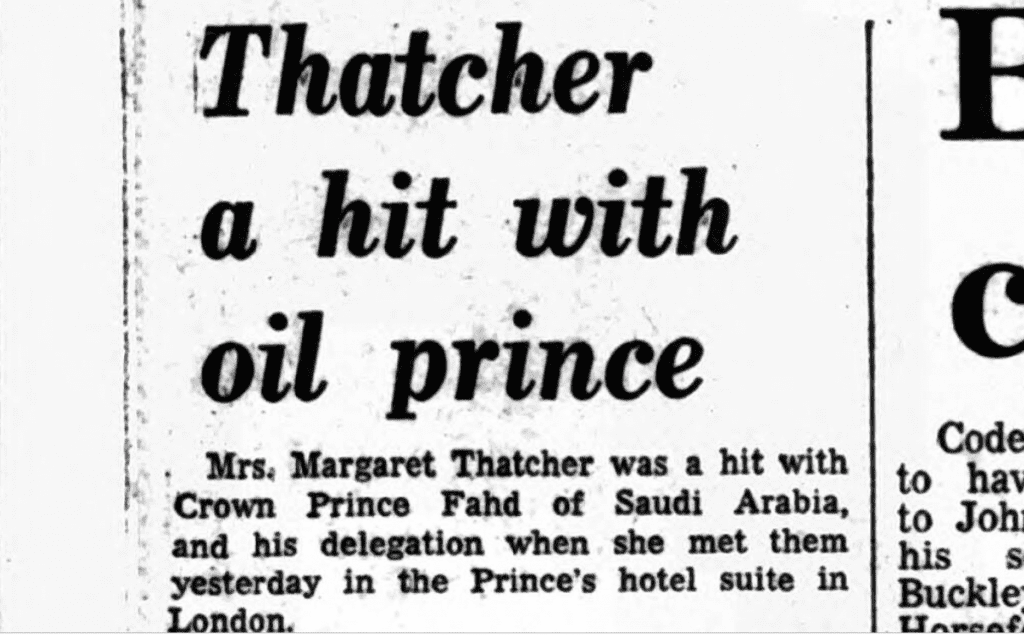Rolf Wiborg is sizing me up—something I imagine he does with most people sitting across his desk. I am in his modest office at the Norwegian Petroleum Directorate, an organization he has led for many years. He leans close with a practiced and penetrating gaze, raising his voice as he recounts how he once dealt with the CEO of a major American oil company who he felt was “bullshitting” him in an hour-long meeting.
“I told him, ‘Stop! You have spent 15 talking about nothing. Our time is paid for by the Norwegian taxpayer so we’d better spend that remaining 45 minutes EFFECTIVELY!’ After that he stopped bullshitting me and had respect,” he says. “These guys understand straight language. That’s how they operate.”
I am Canadian, and trying hard to imagine a painfully polite Canadian public servant having a similar interaction with a foreign oil delegation. It’s helping me realize just how far my country is from replicating what has been achieved in Norway.
Yet such Viking hutzpah is exactly what Wiborg believes is key to establishing a productive working relationship with Big Oil, and may hold the cultural secret to the Norwegian resource miracle.
Like many other nations, Canada is blessed with enormous resource wealth. We are the 7th largest oil-producing nation in the world (Norway is the 15th), with vast forests, mineral deposits and prime farming land. The Canadian province of Alberta legally controls almost 80 percent of the country’s fossil fuel production, has a similar population to Norway yet somehow managed to end up with a $62 billion debt and another $260 billion in unsecured environmental liabilities. Other nations like Nigeria, Venezuela, and Saudi Arabia have become even more wretched examples of resource mismanagement, with deplorable human rights records, dysfunctional economies and rampant graft.
Norway is different. Unlike many countries endowed with natural abundance, Norway has somehow avoided the so-called resource curse—where outside interests make off with most of the money and leave behind corrupt and enfeebled institutions.
I had journeyed to Norway to learn how this small country had managed to capture and save over $1 trillion of resource revenue in the largest sovereign wealth fund in the world. Norway regularly tops global rankings on happiness, human rights and the best country to be a mother. They also outright own over half of their oil production, they tax oil profits at close to 80 percent and are still rated as one of the most desirable jurisdictions for international investment.
This vast oil wealth helps pay for some of the world’s most generous social programs. Norwegian parents share 43 weeks of leave from work at full pay, or 53 weeks at 80 percent pay. The government provides a child allowance for single parents of up to $2,100 per month to cover about two-thirds of day care costs. Excellent and free health care is provided to all citizens as well as free university tuition, even to international students. Most Norwegians get five weeks paid vacation, and any overtime above the standard 37.5 hour work week is paid out at least 140 percent.
Given their oil-powered economy, it is also impressive that the country ranks 14th in the world on the global Environmental Performance Index. Norway was one of the first countries to introduce a carbon tax more than 20 years ago, and in 2013 doubled the rate charged on emissions from the petroleum sector to about $70 per ton. Revenues from that carbon pricing were about $630 million last year.
How did they do it?

Not long ago Norwegians were not rich. Like many nations in Europe they emerged from World War II with rationing of basic commodities and a severe housing shortage. Most rural homes lacked running water and indoor toilets. But when Phillips Petroleum discovered the massive Ekofisk offshore oil field in 1969, this tiny country of less than four million people found themselves across the negotiating table with the world’s most powerful industrial sector.
What happened over the next five decades offers important lessons on why connecting with culture is critical in confronting capital, and how indigenous governance can help assert control over resources.
An ancient connection to the land
To understand why Norway became an outlier, we need first to unpack some factors that shaped human history almost everywhere else.
Conquest and resource plunder have been lucrative business partners for millennia and almost every place on the planet has had a chapter of non-consensual occupation. Indigenous cultures can impede capitalism, so colonization remains a useful tool for moving out original inhabitants that might not agree with sacred spaces being mined, logged, or sold. Ever see Avatar? It’s like that.
Settlers, on the other hand, often struggling as subsistence diaspora and lacking a cultural connection to these “new” lands, can be more easily entwined in the wage economy and short-term extraction.
Contemporary Norway cannot be considered indigenous. The nation has a conflicted history with the Sami people in northern Scandinavia who endured institutional discrimination and residential schools designed to assimilate their culture.
But the descendants of the Vikings in southern Norway are not really a settler culture either. Other than World War II, it remains one of the few places in the world largely untouched by cultural conquest. Unlike in other parts of Europe, millennia of continuous occupation helped foster an ancient connection to the land, a fierce defense of resource rights and a multigenerational perspective.
Some of these values that pre-date the Viking Age are still reflected in present day Norwegian laws. The ancient principle called Odelsrett recognized that if the same family occupied land for six generations, family members have a right to purchase it back if ever sold to a stranger. A version of these 1,000 year old inheritance rights remain enshrined in the Norwegian constitution, and anyone buying a Norwegian farm over 3.5 hectares (8.6 acres) is required to live there for at least five years.
Such Old Norse cultural conditions proved important when they first encountered the 20th century economy. Around 1905, speculators started to pour into the fjords of Norway backed by French and German investors seeking to purchase water rights for hydro developments. Rural Norwegians were outraged that mere money might buy properties occupied by the same families dating back to the Iron Age.
Popular anger led to the passage in 1906 of the Panic Law, halting resource sales until Norway could develop a legal framework preventing natural heritage from being sold as a commodity. Norwegians wanted access to new technologies and the money to develop them, but on their own terms.
Later called Concession Laws, these restrictions decreed that hydro dams and generation plants could be built and operated for 60 years but foreign companies had to train Norwegians in their construction and maintenance. After 60 years the facilities were to be transferred free of charge to the Norwegian Crown. If companies didn’t like those terms, they could pack up their carpetbags and go elsewhere.

Not long after the hydro leases came due decades later in the 1970s, offshore oil was discovered and Norway imposed similar strict conditions on foreign oil companies. Many of these were laid out in what became known as the 10 commandments of the Norwegian oil industry. Tabled in a white paper in 1971, these stipulated that oil extraction would be slow, controlled by the Norwegian people and processed in Norway.
To say the oil industry is accustomed to getting their way around the world is an understatement, so Big Oil was in for a surprise when they failed to politically divide and conquer Norwegians as had been profitably done in many other countries. Norwegian historian Einar Lie of the University of Oslo described an iconic meeting in 1974 where the world’s most powerful industry encountered the immovable object of Norwegian resolve.
The government had already signed multi-year leases with many of the world’s largest oil companies but a Mideast oil embargo had ballooned the global price of oil fourfold. Norwegians decided windfall corporate profits were unfair, and that since they owned the resource, they could change the terms if they wanted. Professor Lie pored through archival documents of the day and described how there was broad support across all political parties for “squeezing the lemon to the maximum”—taxing foreign companies to the limits of tolerance without causing them to leave or launch a legal challenge. Civil servants posted within oil companies passed on valuable intelligence on how far the lawmakers could go in their lemon-squeezing efforts.
When the government tabled a new law that would boost taxes on oil profits to almost 80 percent, the stage was set for a showdown. According to Lie, “Companies were furious when they heard about the new taxation law. They started a media campaign saying that they would leave Norway and that it was impossible to work in a socialist country like this that does not understand the rules of international capitalism.”
After demanding a meeting with the Minister of Finance, oil executives around the room all pounded the table and threatened to abandon their concessions unless Norway backed down. The unfazed minister instead turned to his aides and said in full view of the enraged oilmen, “Why are they all still here? We should have taken more!”
That attitude, in a nutshell, is why the country now has more than $1 trillion in the bank. In spite of the usual industry fear mongering, the new tax law easily passed Norwegian parliament and has been supported by every government since 1975.
Easer does’er
Another way Norway is able to maintain control over resource development is with an intentional go-slow approach. While many other nations extracted their oil as quickly as possible, Norway purposely decided to limit new wells and keep much of it in the ground for future generations. A policy paper from the 1970s stated “…After a comprehensive evaluation of its social aspects, the Government has concluded that Norway should take a moderate pace in the extraction of petroleum resources.” Foreign companies were not pleased with such restrictions, but did not flee either.
Not wanting to become dependent on oil revenues, Norway set up their oil fund in 1990 as an unbreakable piggy bank for all petroleum revenues, stipulating that no government could access more than four percent of the principal each year. Fund managers were also forbidden from investing within Norway to avoid inflating their national currency.
After their oil savings reached $200 billion in 2005, the Norwegian national bank hired a staff philosopher to advise them on managing the vast sum of money for the benefit of generations yet unborn. Professional ethicist Henrik Syse had perhaps the best-paid philosopher gig in the world as head of Corporate Governance for the oil fund, which has since grown to control 1.3 percent of global equity markets.
The fund now has a permanent ethics committee with so much market influence that it is being used to achieve global goals in line with national values. At a Facebook shareholders meeting last year, fund managers supported a resolution demanding better steps to combat fake news. Dozens of companies have been excluded from the portfolio due to ethical issues around workers rights, corruption and environmental destruction. Concern over climate change and stranded assets means oil fund managers are now leading the largest divestment from fossil fuels in history, selling off holdings in 134 oil and gas companies worth about $50 billion.
Who did history prove right?
Things played out very differently across the North Sea where a competing worldview was applied to developing the same oil fields. Margaret Thatcher was swept to power as U.K. Prime Minister in 1979 and soon brought in free-market measures to privatize public assets and limit the role of government in the economy.
While Norway was scaling up their publicly owned oil company Statoil, Thatcher was selling off the U.K. government stake in British Petroleum. Norway overtly taxed oil companies to the limits of tolerance. The Iron Lady instead boasted, “Our aim is to make tax collecting a declining industry.” The school of thought that public revenue is somehow a negative has since taken root around the world and still bears her name.

Here’s the thing: North Sea oil deposits roughly straddled the international boundary between the U.K. and Norway. Both countries were negotiating with the same companies at the same time over the same oil. Forty years later, which style of resource governance prevailed in this ideological cage match? Lady Thatcher once opined, “Socialist governments traditionally do make a financial mess. They always run out of other people’s money.” Did history prove her right?
The U.K. wanted to maximize extraction and allowed companies to flare off enormous amounts of natural gas to access the more lucrative oil, a practice explicitly banned on Norwegian rigs. By 2011, the U.K. had extracted nine percent more oil and gas than Norway, yet collected $156 billion less in taxes and royalties. Because Norway also had a large public stake in oil production through Statoil, they realized a further $227 billion in revenue. Because Norway also decided to go slow with extraction, they also had an extra 3.3 billion barrels in the ground worth another $120 billion. All this adds up to over $650 billion more that Norway received compared to the U.K. for extracting the same resource at the same time.
More in common than they realize
What can the world learn from the oil Vikings? Obviously good policies and strong institutions matter, but perhaps most important is the fierce sense of place to back it up. In a fragmented natural world, that strong connection to the land increasingly resides with indigenous peoples and cultures. Unsurprisingly, indigenous people are also disproportionately the ones confronting extractive capitalism around the world.
The United Nations just released a global report on biodiversity showing that areas with some form of indigenous governance—amounting to a whopping one-quarter of the world’s land base—have significantly better protection of ecosystems. Culture, connection and protection seem to naturally flow from continuous occupation. The report calls for governments to support indigenous involvement in conservation efforts as a key part of helping to “transform the public and private sectors to achieve sustainability at the local, national and global levels.”
While less than 5% of the world’s population, #indigenous peoples protect 80% of global #Biodiversity
This invaluable knowledge is crucial for the post-2020 biodiversity framework and protecting life on Earth for future generations#IndigenousPeoplesDayhttps://t.co/SUbOjUUY87
— IPBES (@IPBES) August 9, 2019
With culture being critical to recreating the Norwegian success story, it is the indigenous groups around the world that still possess that crucial ingredient.
As their own oil history winds down, perhaps Norwegians with an expertise in their resource success can partner with indigenous peoples fighting to control traditional territories on their own terms. They might have more in common than they realize. Norway has gamely tried to mentor over 30 national governments since 2005 through their Oil for Development program, with mixed results. Last year, over $18 million in technical support was provided to 14 countries intended to improve the management of local petroleum resources. The biggest beneficiary in 2018 was Mozambique, which has hardly been a shining example of a nation avoiding the resource curse.
Obviously the world has much to learn from Norway but a past focus on policies rather than the critical cultural component means there may be vast room for improvement in making this happen. For instance, the Oil for Development program—now 14 years old—has engaged mainly with national governments that are the result of colonial histories, not with indigenous peoples. The program is also exclusively for petroleum resources and amounts to less than one percent of Norway’s $3.9 billion international development budget. Norway is delivering excellent assistance to indigenous peoples around the world but mainly through money rather than mentoring. As rich as they are, Norway’s most precious offering may be their counterintuitive commonalities with front line indigenous groups.
Years after my conversation with Rolf Wiborg, his blunt insights still resonate with me. Resource extraction is not going away. Finding better ways to hold onto local value and control can make it more prosperous and sustainable. Valuing the role of culture, and the deep connection to land that indigenous groups hold, may be the key to unlocking that puzzle.
This story is part of a collection called Doing Good is Good Business: Stories about generating clean energy while making a buck. Read more here.









